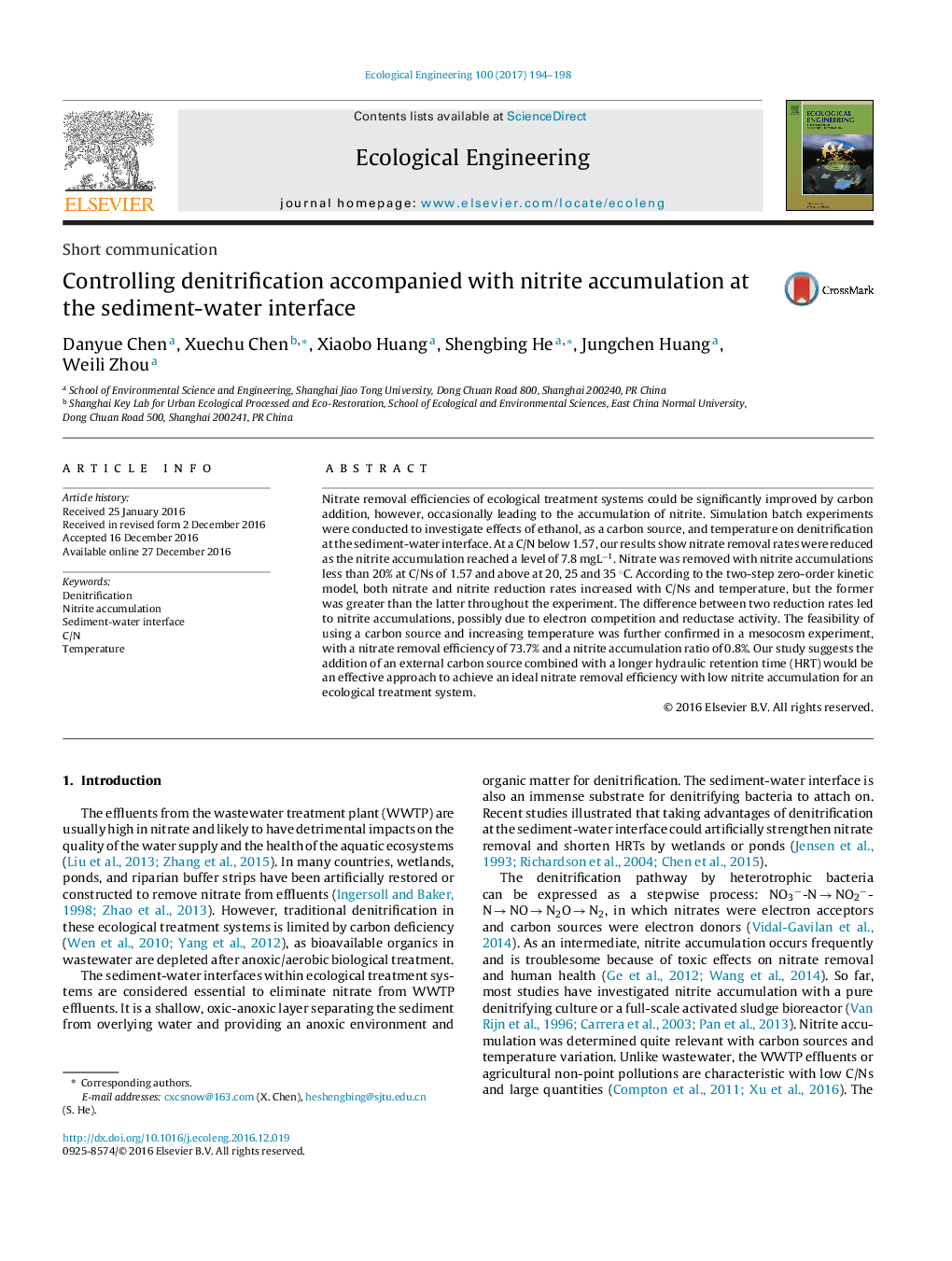| Article ID | Journal | Published Year | Pages | File Type |
|---|---|---|---|---|
| 5743720 | Ecological Engineering | 2017 | 5 Pages |
â¢Nitrite accumulations were frequently observed at the sediment-water interface.â¢The nitrate removal and nitrite accumulation are greatly affected by the addition of carbon.â¢Carbon deficiency would result in electron competition and then nitrite accumulation.â¢Excess carbon combined with extended HRTs has great potential to achieve ideal denitrification performances of an ecological treatment system.
Nitrate removal efficiencies of ecological treatment systems could be significantly improved by carbon addition, however, occasionally leading to the accumulation of nitrite. Simulation batch experiments were conducted to investigate effects of ethanol, as a carbon source, and temperature on denitrification at the sediment-water interface. At a C/N below 1.57, our results show nitrate removal rates were reduced as the nitrite accumulation reached a level of 7.8 mgLâ1. Nitrate was removed with nitrite accumulations less than 20% at C/Ns of 1.57 and above at 20, 25 and 35 °C. According to the two-step zero-order kinetic model, both nitrate and nitrite reduction rates increased with C/Ns and temperature, but the former was greater than the latter throughout the experiment. The difference between two reduction rates led to nitrite accumulations, possibly due to electron competition and reductase activity. The feasibility of using a carbon source and increasing temperature was further confirmed in a mesocosm experiment, with a nitrate removal efficiency of 73.7% and a nitrite accumulation ratio of 0.8%. Our study suggests the addition of an external carbon source combined with a longer hydraulic retention time (HRT) would be an effective approach to achieve an ideal nitrate removal efficiency with low nitrite accumulation for an ecological treatment system.
